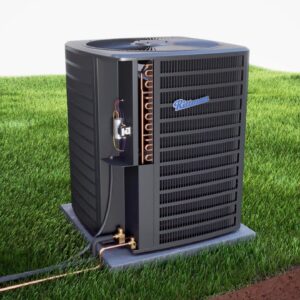Introduction
Air conditioning has become an essential component of modern-day living. It not only provides comfort during the hot summer months, but also helps to maintain a healthy living environment by filtering out particulates and controlling humidity levels. But how exactly does air conditioning work, and what are the key components that make up a typical system? In this article, we’ll dive deep into the fundamental principles of air conditioning and explore the eight main components that play a critical role in cooling your home.
Thermostat
The Control Center of Your Air Conditioning System
The thermostat is essentially the control center of your air conditioning system. It’s an integral part of maintaining your desired indoor temperature. By setting the thermostat to a specific temperature, you trigger the air conditioning system to turn on and adjust accordingly. The thermostat continuously monitors the temperature inside your home and sends signals to the various components within the system, ensuring that your home stays at the desired level of comfort.
Condenser
Releasing Heat Outdoors
The condenser is a critical component within your air conditioning system. It’s responsible for releasing the heat collected from inside your home to the outdoors. This is done by converting the high-temperature, high-pressure refrigerant vapor that enters the condenser into a medium-temperature, high-pressure liquid. The condenser coil aids in this heat transfer process by allowing heat to radiate away from the system.
Condenser Fan
The condenser fan plays a crucial role in the efficient functioning of the condenser. It improves the heat dissipation process by drawing air across the condenser coil, which in turn helps cool down the refrigerant faster and more effectively.
Compressor
Driving the Refrigerant Cycle
As the ‘heart’ of the air conditioning system, the compressor serves the vital purpose of driving the refrigerant cycle. It does this by compressing the refrigerant, which enters as a low-temperature, low-pressure vapor. The refrigerant then leaves the compressor as a high-temperature, high-pressure vapor, ready to travel through the condenser coil and release its absorbed heat.
Metering Device
Regulating Refrigerant Flow
The metering device, often a thermal expansion valve, plays a crucial role in regulating the flow rate of refrigerant within the system. It does this by adjusting the flow based on the temperature at the evaporator end, using a sensing bulb. As the refrigerant flows through the metering device, its pressure drops significantly, releasing a low-temperature, low-pressure liquid/vapor mix that is perfect for cooling your home.
Evaporator
Chilling the Air
The evaporator is the component responsible for chilling the air that ultimately cools your home. It does this by circulating the low-temperature, low-pressure refrigerant through its coil, where it absorbs heat from the room-temperature air passing over it. This heat transfer process causes the refrigerant to boil and evaporate back into vapor form, ready to return to the condenser and release the absorbed heat outside.
Condensate Drain Line
As the air passes over the evaporator coil, condensation forms on the outside of the coil. This condensation is then removed from the system via a condensate drain line, ensuring that excess moisture does not cause potential issues within your air conditioner, such as the growth of mold or bacteria.
Blower
Circulating Cool Air Throughout Your Home
The blower is responsible for circulating the cool air throughout your home. It starts by drawing room-temperature air in through the return duct, where it first passes through a filter to remove any particulates before entering the evaporator coil. After the air has been chilled by the evaporator, the blower disperses the cool air throughout your home via the supply duct, providing you with a comfortable living environment.
Filter
Improving Air Quality
The filter is an essential component of any air conditioning system, as it helps to remove particulates and improve the overall air quality within your home. By trapping dust, pollen, and other airborne contaminants, the air filter prevents them from being circulated throughout your living space and contributing to potential health issues.
In conclusion, understanding how air conditioning works and the various components involved can not only help you appreciate the value of this modern-day amenity, but also assist in identifying potential issues that may arise during its operation. Investing in regular maintenance and timely repairs can ensure that your air conditioning system remains efficient, effective, and capable of keeping you and your loved ones comfortable all summer long.

